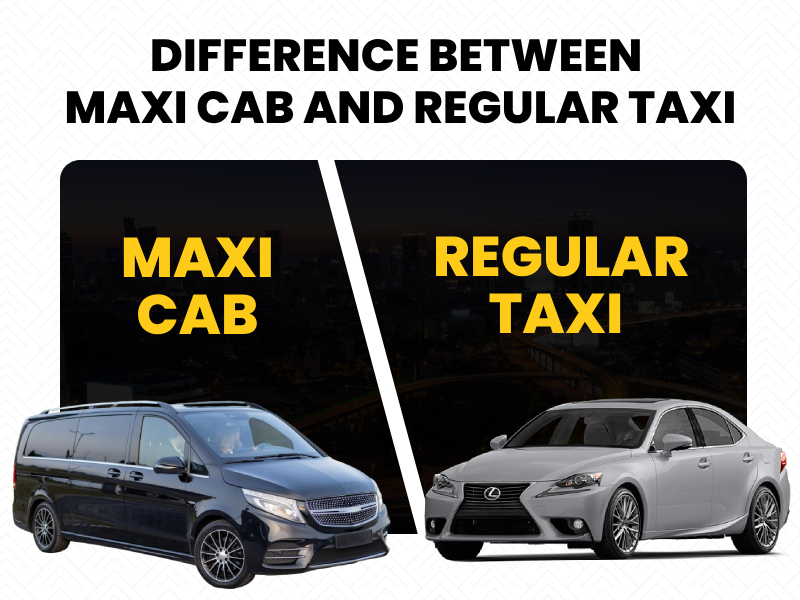Maxi Cab vs. Regular Taxi – What’s the Difference

Picture this: you’ve just landed at the airport after a long flight. You’re juggling a suitcase, a carry-on, and maybe a cranky toddler who’s had one too many in-flight cookies. The last thing you want is to squeeze into a cramped car or wait around for a ride that can’t handle your crew. That’s where the showdown between a maxi cab and a regular taxi comes into play. Sure, they’re both wheels to get you from point A to point B, but the differences? They’re real—and they matter, especially for airport transfers.
Let’s break it down with a story I heard from a friend last summer. She was flying into Melbourne with her husband, two kids, and enough luggage to outfit a small expedition. They’d booked a regular taxi, thinking, “How hard can it be?” Turns out, pretty hard. The driver pulled up in a sedan, took one look at their mountain of bags, and shook his head. They ended up splitting into two cabs—double the cost, double the hassle, and a whole lot of frustration before they even got to their hotel. A maxi cab could’ve saved the day, but they didn’t know the difference back then. I’m betting you don’t want to make the same mistake.
What’s a Maxi Cab?
A maxi cab—sometimes called a maxi taxi or shuttle—is like the big sibling of the taxi family. Think of it as a spacious van designed to haul more people and gear than your standard cab. Depending on where you are, it can seat anywhere from 7 to 11 passengers, sometimes more, and it’s got room in the back for luggage that’d make a regular taxi driver sweat. Regular taxis, on the other hand, are usually sedans or hatchbacks—great for a solo traveler or a couple with a backpack, but they hit their limit fast.
I’ve seen maxi cabs in action at busy hubs like Singapore’s Changi Airport or Sydney International. They’re the ones pulling up with sliding doors, swallowing up families, sports teams, or that group of friends who overpacked for a weekend getaway. Regular taxis? They’re zipping around for the business traveler with a briefcase or the late-night ride home from the bar. Different beasts, different purposes.
Space: The Game-Changer for Airport Trips
Here’s where it gets practical. Airports aren’t just about you—they’re about your stuff. Whether it’s a snowboard from that ski trip, a stroller for the little one, or just an obscene amount of duty-free shopping, space is king. A regular taxi might fit four people and a couple of small bags if you’re lucky. Try cramming in a fifth person or an extra suitcase, and you’re playing Tetris with the trunk—and probably losing.
Maxi cabs flip the script. They’re built for volume. Last month, I watched a group of six pile into one at LAX—luggage, a guitar case, and a dog crate, no less—and they didn’t even blink. The driver slid the door shut, and off they went, no second car was needed. For airport transfers, that kind of capacity can mean the difference between a smooth ride and a logistical nightmare.
Cost vs. Convenience: The Real Math
Now, you might be thinking, “Sure, but isn’t a maxi cab way more expensive?” Not always—and here’s why it matters. A regular taxi might cost less upfront, say $30 for a quick airport run. But if you’ve got a group or a pile of bags that forces you into two cabs, you’re looking at $60 or more. Suddenly, that $50 maxi cab fare starts looking like a steal. Plus, you’re not splitting up, losing time, or tipping two drivers.
I ran into a guy at a coffee shop who swore by maxi cabs for his family’s annual trip to Bali. “We used to book two taxis,” he said, “but half the time, one would get lost in traffic, and we’d be texting each other like, ‘Where are you?’ Now we just pile into one maxi cab and relax.” Convenience has a price, but it’s often less than the headache of the alternative.
Booking and Availability
Here’s a heads-up, though: maxi cabs aren’t always as easy to hail on the fly. Regular taxis are everywhere—wave your hand at the airport rank, and one’s yours in seconds. Maxi cabs often need a pre-booking, especially during peak travel seasons. Most cities have companies that let you reserve online or call, which is a small trade-off for peace of mind. My advice? If you’re rolling deep or your luggage looks like you’re moving house, plan.
Why It Matters for Airport Transfers
Airport trips are a different beast. You’re tired, you’re on a schedule, and you’ve got no patience for surprises. A regular taxi works if it’s just you and a carry-on, darting through traffic to your downtown hotel. But for groups, families, or anyone with more than the basics, a maxi cab isn’t just a luxury—it’s a lifeline. It keeps everyone together, cuts down on stress, and lets you start your trip (or end it) without playing baggage roulette.
I had my cousin’s wedding party last year. They flew into Brisbane with eight people and a small army of suitcases. The maxi cab they booked was waiting for curbside, and they were at the resort in one piece, laughing about the flight instead of fuming over a split convoy. That’s the kind of difference that sticks with you.
So, Which One’s Right for You?
It boils down to your needs. Solo or with a light load? A regular taxi’s your speed—quick, cheap, and no fuss. Traveling with a crew, kids, or gear that won’t quit? Maxi cab’s the move. Next time you’re staring down an airport transfer, think about my friend’s Melbourne meltdown—or that wedding party’s smooth sailing. The choice isn’t just about getting there; it’s about how you arrive.
What’s your next trip looking like? Maybe it’s time to size up your ride.









